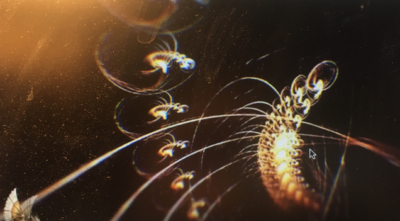
Alvasar : I wonder what is the wave genetics, and how did you come to discover it.
Peter Gariaiev: Genetics is divided into two parts, the first would be the linguistic component, because the DNA molecule is speech, the word of the Creator, If you want. The second half would be the quantum part which includes quantum delocalization : Cells inside our body, are instantly exchanging biological information , without delay. The cells know everything instantly. This is a major achievement in the biology of multicellular organisms. Probably, mono-cell organism does not have this mechanism.
This separation is particularly significant. The linguistic part essentially concerns protein synthesis. Proteins are the basic metabolites, who assume roles of strategic and tactical regulation, and construction in the body. This is the linguistic or textual part. We spent a lot of time for this part.
The other part is the quantum part, which affects me less professionally because I am not a physicist but a geneticist. This key property of DNA, as part of a chromosome, to be a true laser, emitting coherent light in the visible range of 250 to 800 nanometers.
